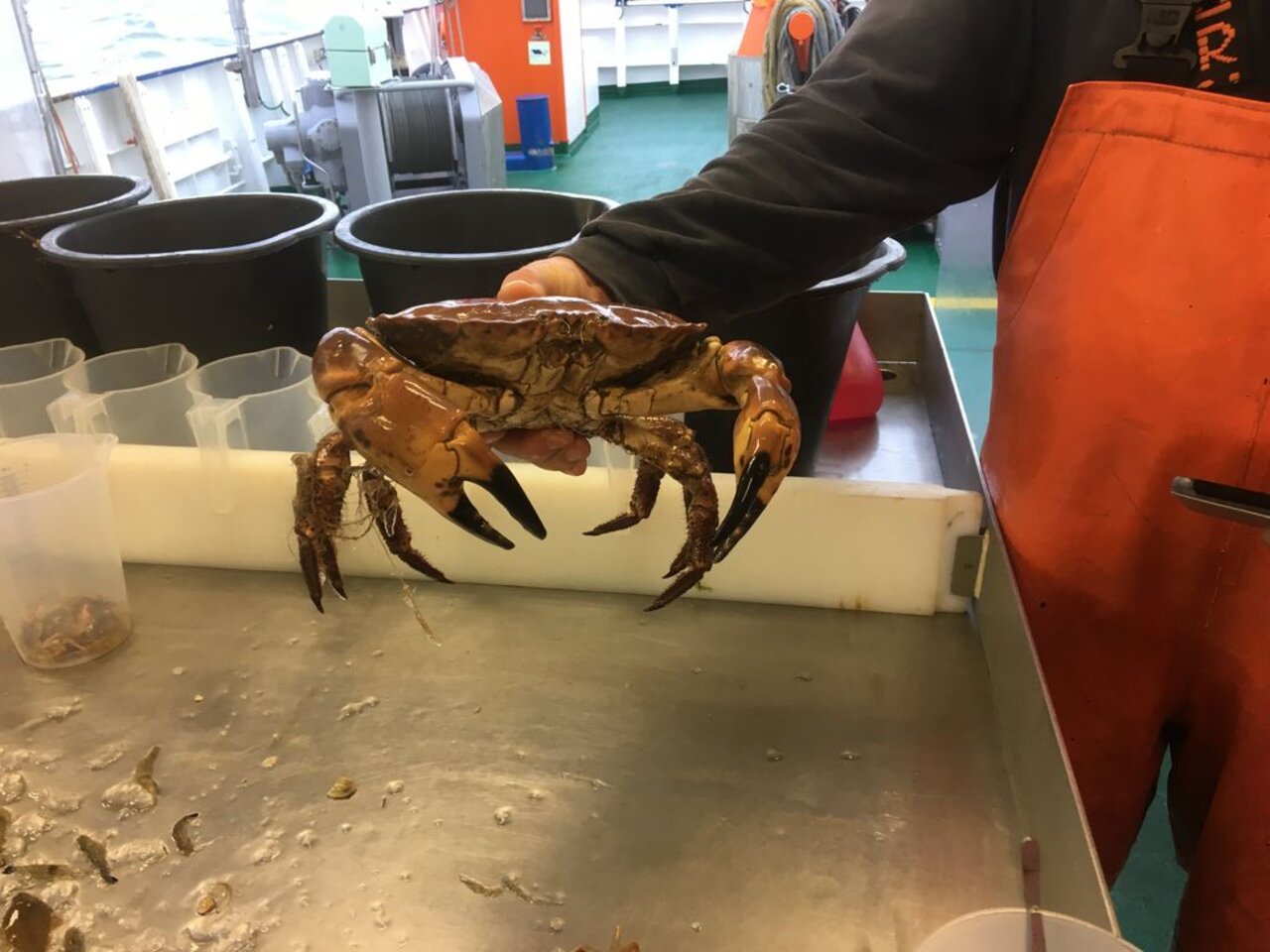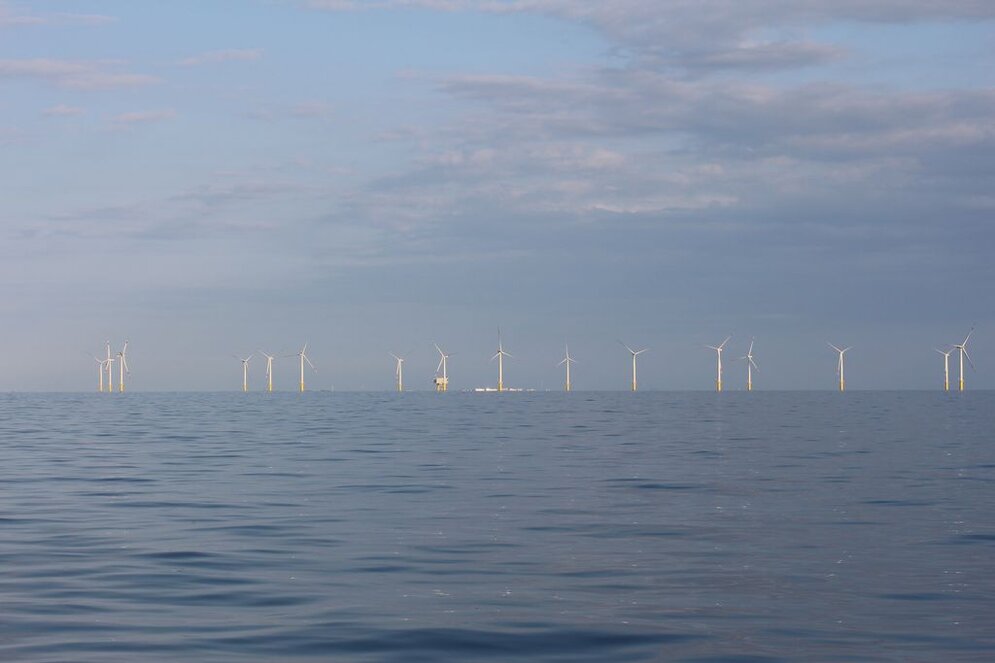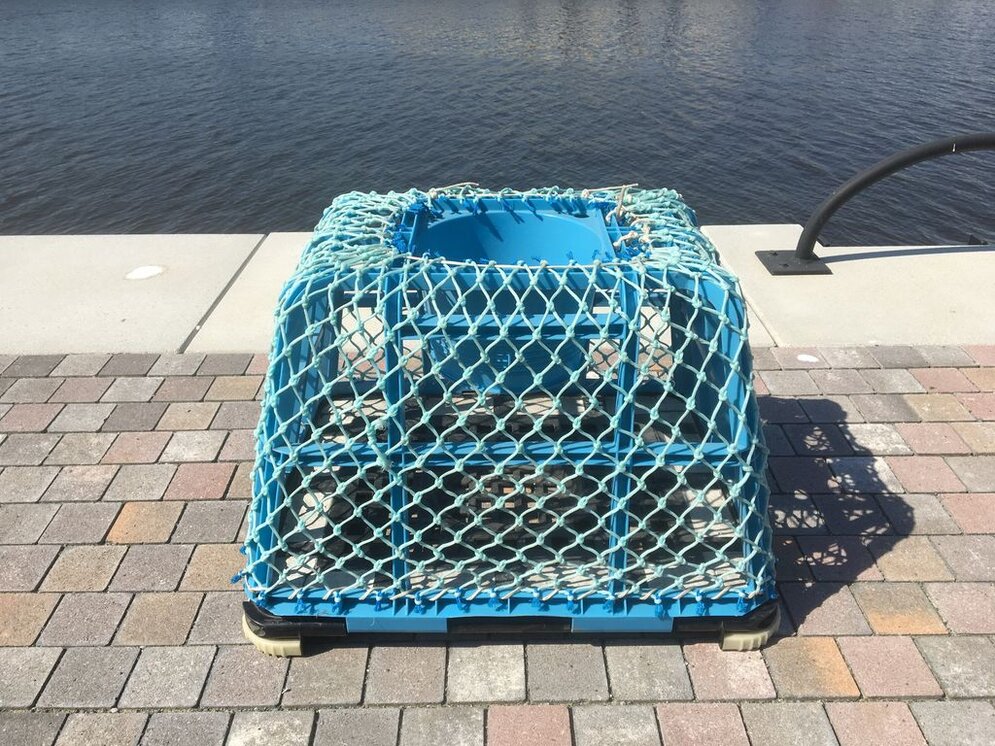Project
Offshore wind farms in the context of ecosystem-based marine spatial management

The project “Offshore wind farms in the context of ecosystem-based marine spatial management” explored the effects of offshore wind farms on the ecosystem.
Background and Objective
The compatibility of nature conservation, the development of wind energy and the use of natural resources constitutes a challenge, particularly in coastal areas. Our team aimed to investigate the effects of offshore wind farms on maritime fauna, focussing on commercially important species such as cod, brown crab or oyster.
Target Group
Science, Industry, Politics, Nature conservation
Approach
The project aimed at the following scientific questions: (i) suitability of wind farms as a potential spawning area for cod; (ii) local increase of brown crab and its spatial expansion, a so called "spillover-effect" into the nearest vicinity of the wind farm as a consequence; (iii) suitability of the wind farm or its surrounding for sustainable aquaculture techniques.
Data and Methods
The Thünen-Institute aims for those scientific goals in close collaboration with the operator of the wind farm Meerwind Süd/Ost on the basis of two experimental set-ups within the wind farm and the close vicinity of the wind farm (500 m security buffer zone):
- Assessment of cod progeny in order to reconstruct the spawning behaviour and suitability of the wind farm as a reproduction and resting area for cod in the Southern North Sea.
- Sampling of brown crab abundance to analyse the population structure in the close vicinity to the wind farm. Further, the distribution of brown crab will be studied to identify a potential "spillover-effect" in adjacent waters.
Moreover, our work takes part in close collaboration with the Alfred-Wegener Institute (AWI) on previous and ongoing studies to:
- Define ecological baselines for sustainable aquaculture techniques near wind farms
- Analyse the economic viability for offshore aquaculture
- Develop potential marketing strategies in close collaboration with local businesses
Finally, outcomes were widely disseminated to the public: At our symposium "Marine resources and wind farms", at the trade fair "Fish international", by a permanent exhibition on "Offshore wind farms in the context of ecosystem-based marine spatial planning and use" in the Seefischkochstudio Bremerhaven and through the production of the brochure "Offshore wind farms: Opportunities for fisheries and nature conservation".
Our Research Questions
- Does cod use wind farms as (preferred) spawning area?
- Do wind farms lead to a local increase of the abundance of brown crab?
- Does the spatial expansion of brown crab lead to a "spillover-effect" in the nearest vicinity of the wind farm?
- How suitable are wind farms or their surroundings for sustainable aquaculture techniques?
Results
- Filter feeders settle on the foundations and scour protection of the wind turbines.
- Cod aggregate at the turbines, individuals seem to find a wider range of food and appear to be in good condition. Plankton catches in combination with drift models indicate spawning activities in the wind farm area.
- Wind farm areas appear to be a kind of nursery for crabs, adult animals migrate (spillover effect up to 1 km into surrounding waters).
- After extensive analyses, aquaculture with European oyster has proven to be particularly interesting. A simulation of production at the southern part of the wind farm turned out to be particularly profitable.
- The commercial crab fishery in the vicinity of offshore wind farms is increasing.
- Edible crabs, but also mussels and European oysters can be marketed regionally by the German fishery. For this purpose it is important to have a corresponding "Story telling."
Gimpel A, Stelzenmüller V, Haslob H, Berkenhagen J, Schupp MF, Krause G, Buck BH (2020) Offshore-Windparks: Chance für Fischerei und Naturschutz. Braunschweig: Johann Heinrich von Thünen-Institut, 6 p, Thünen à la carte 7, DOI:10.3220/CA1580724472000
pdf document (limited accessibility) 2584 kb
Stelzenmüller, V., Gimpel, A., Haslob, H., Letschert, J., Berkenhagen, J., Brüning, S. (2021) Sustainable co-location solutions for offshore wind farms and fisheries need to account for socio-ecological trade-offs. Science of The Total Environment, Volume 776, 1 July 2021, 145918. https://doi.org/10.1016/j.scitotenv.2021.145918
Links and Downloads
Thünen-Contact

Involved Thünen-Partners
Involved external Thünen-Partners
- Alfred Wegener Institut (AWI) - Helmholtz -Zentrum für Polar und Meeresforschung
(Bremerhaven, List (Sylt), Deutschland) - WindMW GmbH
(Bremerhaven, Deutschland)
Funding Body
-
European Union (EU)
(international, öffentlich)
Duration
3.2018 - 2.2020
More Information
Project status:
finished
This project will carried out by the Thünen Institute in cooperation with the Alfred-Wegner-Institute and the wind farm operator WindMW Service GmbH and with financial support by the Bremer Umweltsenator from the Angewandte Umweltforschung (AUF)-program as well as financial support by the European Regional Development Fund (ERDF).
Publikationen
- 0
Gimpel A, Werner K-M, Bockelmann F-D, Haslob H, Kloppmann MHF, Schaber M, Stelzenmüller V (2023) Ecological effects of offshore wind farms on Atlantic cod (Gadus morhua) in the southern North Sea. Sci Total Environ 878:162902, DOI:10.1016/j.scitotenv.2023.162902
- 1
Stelzenmüller V, Gimpel A, Haslob H, Letschert J, Berkenhagen J, Brüning S (2021) Sustainable co-location solutions for offshore wind farms and fisheries need to account for socio-ecological trade-offs. Sci Total Environ 776:145918, DOI:10.1016/j.scitotenv.2021.145918
- 2
Gimpel A, Stelzenmüller V, Haslob H, Berkenhagen J, Schupp MF, Krause G, Buck BH (2020) Offshore-Windparks: Chance für Fischerei und Naturschutz. Braunschweig: Johann Heinrich von Thünen-Institut, 6 p, Thünen à la carte 7, DOI:10.3220/CA1580724472000

![[Translate to English:] [Translate to English:]](/media/_processed_/7/1/csm_IMG_7977_large_1defaf5de1.jpg)









